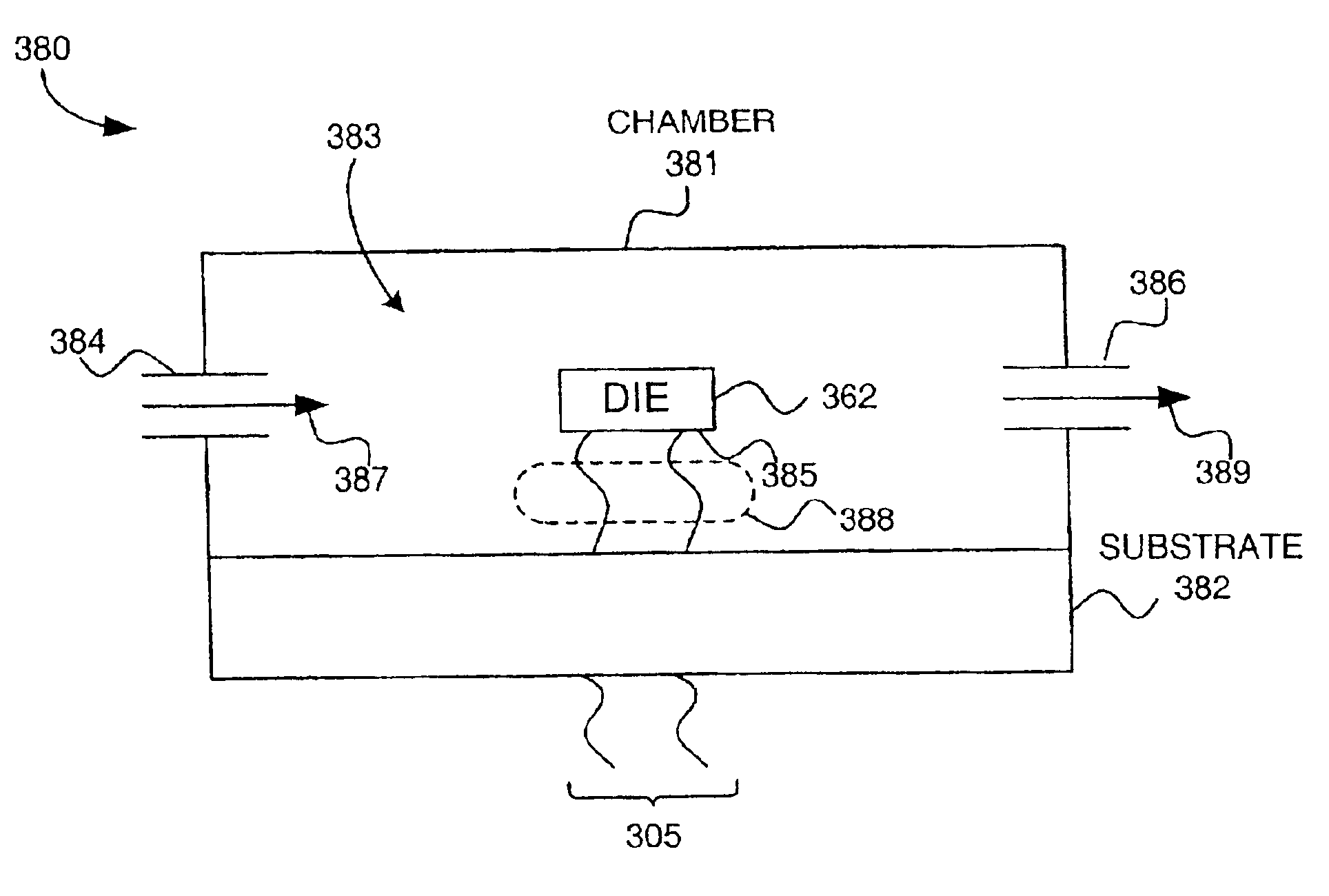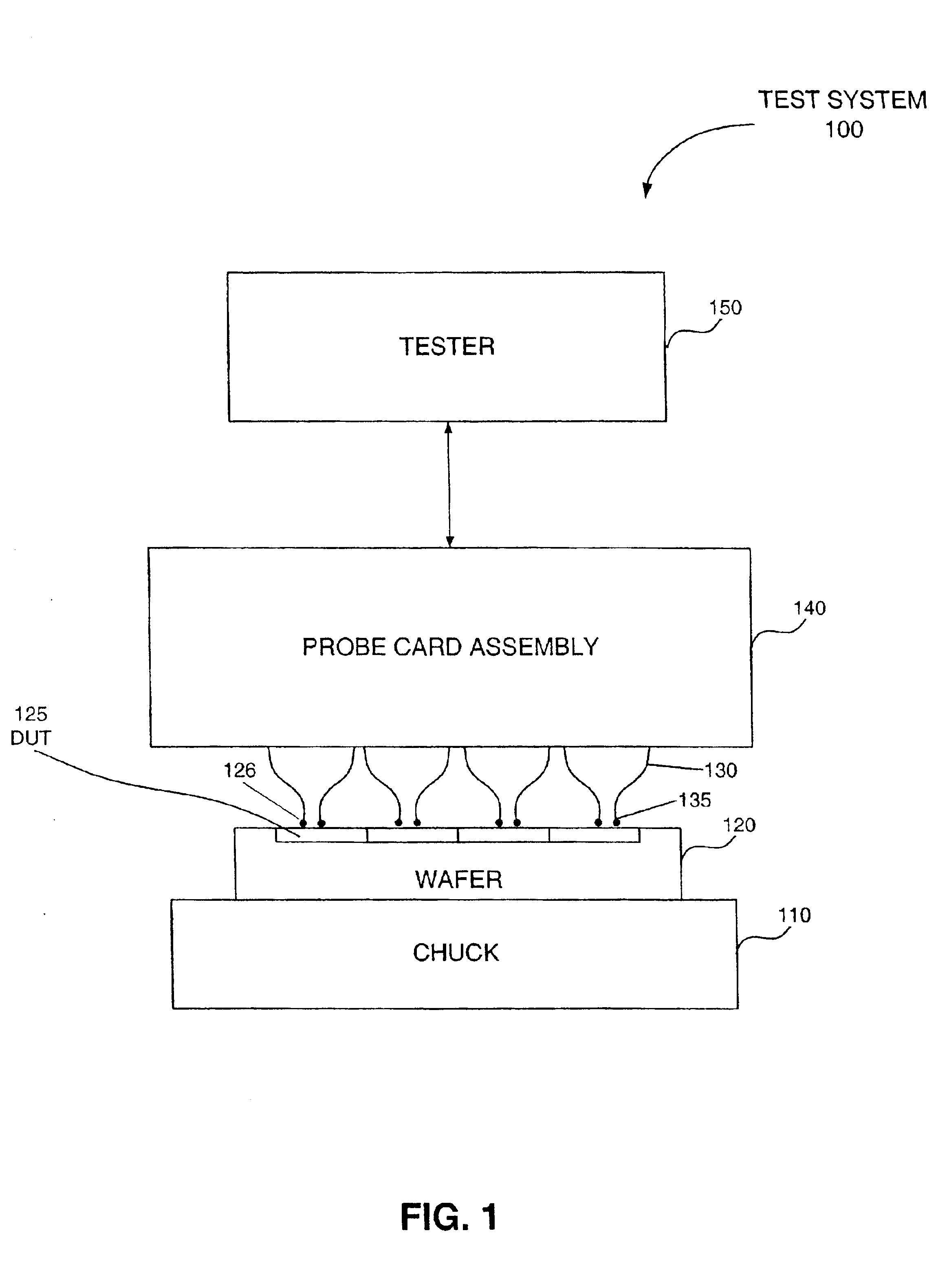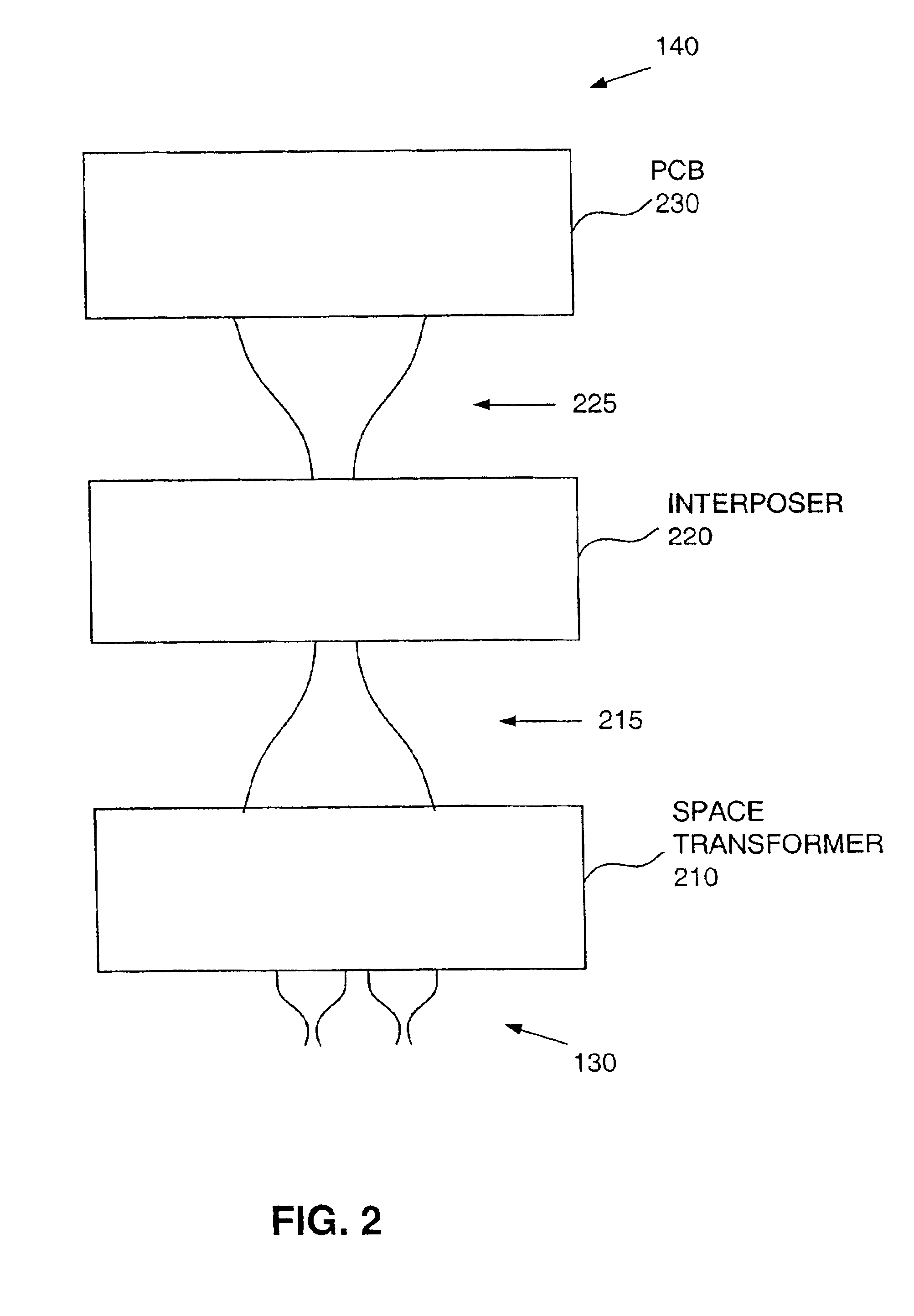Probe card cooling assembly with direct cooling of active electronic components
a technology of active electronic components and cooling assembly, which is applied in the field of micro-onductors manufacturing and testing, can solve the problems of poor dies, difficult to provide uniform output signals, and poor dies, so as to reduce the conduction path of signals, increase performance, and facilitate disassembly for maintenance and repair.
- Summary
- Abstract
- Description
- Claims
- Application Information
AI Technical Summary
Benefits of technology
Problems solved by technology
Method used
Image
Examples
Embodiment Construction
Table of Contents
[0041]1. Overview and Discussion[0042]2. Terminology[0043]3. Probe Card Cooling Assembly[0044]4. Cooled Package with One or More Dies[0045]5. High-Density Cooled Packages[0046]6. Routine for Incorporating Active Electronic Components Near Probe Elements[0047]7. Types of Springs Contacts[0048]8. Additional Embodiments[0049]9. Conclusion
[0050]The following description is for the best modes presently contemplated for practicing the invention. This description is not to be taken in a limiting sense, but is made merely for the purpose of describing the general principles of the invention. The scope of the invention should be ascertained with reference to the claims. In the description of the invention that follows, like numerals or reference designators will be used to refer to like parts or elements throughout.
1. Overview and Discussion
[0051]The present invention provides a probe card cooling assembly. The probe card cooling assembly includes a cooled package with one o...
PUM
 Login to View More
Login to View More Abstract
Description
Claims
Application Information
 Login to View More
Login to View More - R&D
- Intellectual Property
- Life Sciences
- Materials
- Tech Scout
- Unparalleled Data Quality
- Higher Quality Content
- 60% Fewer Hallucinations
Browse by: Latest US Patents, China's latest patents, Technical Efficacy Thesaurus, Application Domain, Technology Topic, Popular Technical Reports.
© 2025 PatSnap. All rights reserved.Legal|Privacy policy|Modern Slavery Act Transparency Statement|Sitemap|About US| Contact US: help@patsnap.com



